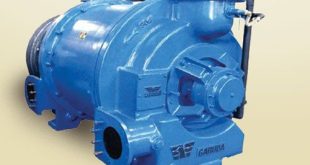What is helium leak testing?
Helium leak testing is a highly sensitive method for detecting and locating leaks in sealed systems or components. It utilizes helium, a small, inert gas, as a tracer to identify even the smallest leaks, which might be missed by other methods. The test is often performed using a mass spectrometer, which detects the presence of helium molecules.
Helium is chosen as a tracer gas because it is small, inert (non-reactive), and non-toxic, making it safe to use and unlikely to react with the materials being tested. It’s also easily detectable by mass spectrometers.
- Pressurized System:
In one method, the component or system being tested is pressurized with helium gas.
- Vacuum System:
Alternatively, the component can be placed under a vacuum, and helium is sprayed around it.
- Mass Spectrometer:
A mass spectrometer, specifically calibrated to detect helium, is used to “sniff” for helium leaks. If there is a leak, the helium will escape and be detected by the mass spectrometer.
- Detector Probe:
A detector probe is used to scan the component, and the mass spectrometer monitors for helium presence.
- Tracer Probe:
A tracer probe can be used to spray helium around the component under vacuum.
- Hood Test:
The component is placed under vacuum, and a hood is used to contain any escaping helium.
۳٫ Types of Helium Leak Testing:
- Integral testing: This method shows if there’s a leak but doesn’t pinpoint its location.
- Local testing: This method helps locate the source of the leak.
- High Sensitivity:
Helium leak testing is extremely sensitive, capable of detecting very small leaks.
- Non-Destructive:
It’s a non-destructive testing method, meaning it doesn’t damage the component being tested.
- Versatility:
It can be used on various components and systems, from small vials to large industrial equipment.
۵٫ Advantages:
- Accurate: Provides precise leak detection.
- Repeatable: The test results are consistent and reliable.
- Suitable for various applications: From aerospace to medical devices.
Helium is one of the smallest gas molecules and is inert. Being inert it is relatively safe to use and will not react with any of the materials within the part to be tested. In most helium leak testing applications, one uses a mass spectrometer (leak detector) tuned to detect helium. A 95% nitrogen 5% hydrogen mix can be used as well. Helium leak testing is generally more sensitive than using pressure decay techniques. Pressure decay also does not allow you to pinpoint the specific location of the leak using a tracer gas.
Leak Detection Methods
Vacuum: The equipment to be tested is evacuated using the leak detector or the leak detector in conjunction with a larger roughing pump. A tracer gas is applied to the outside of the equipment to pinpoint the leak location.
Sniff: The equipment to be tested is pressurized with a search gas or a search gas mixture. A sniffer probe connected to the leak detector will be used to sniff for leak location on the equipment.
Between the two methods there exist many variations depending on the particular application.
